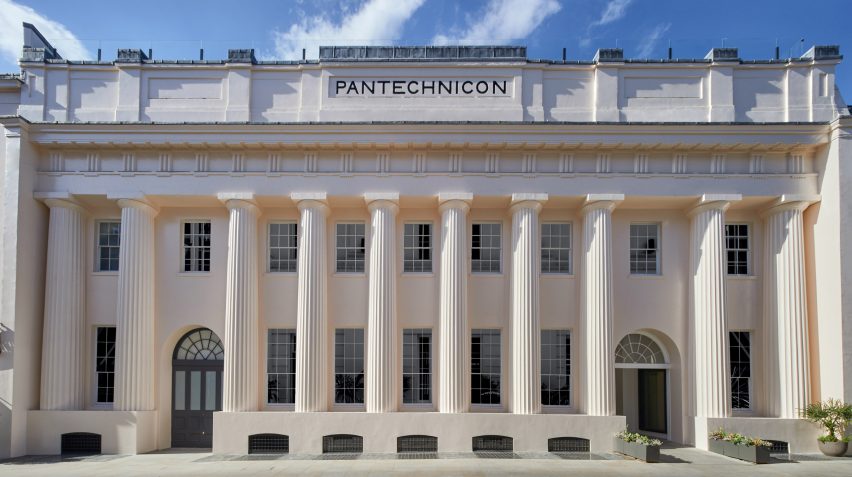
Pantechnicon store in London infuses Japanese and Nordic culture
Architecture firm Farrells has overhauled a 19th-century building in London's Belgravia neighbourhood to create a shopping and dining destination that spotlights both Japanese and Nordic craft.
The Pantechnicon building was originally built in 1830 as an arts and crafts centre, before becoming a warehouse where the affluent locals of Belgravia could store their excess belongings.
Now, following five years of renovation works, it contains shops, cafes, bars and restaurants that all, in some way, reflect Japanese and Nordic culture.
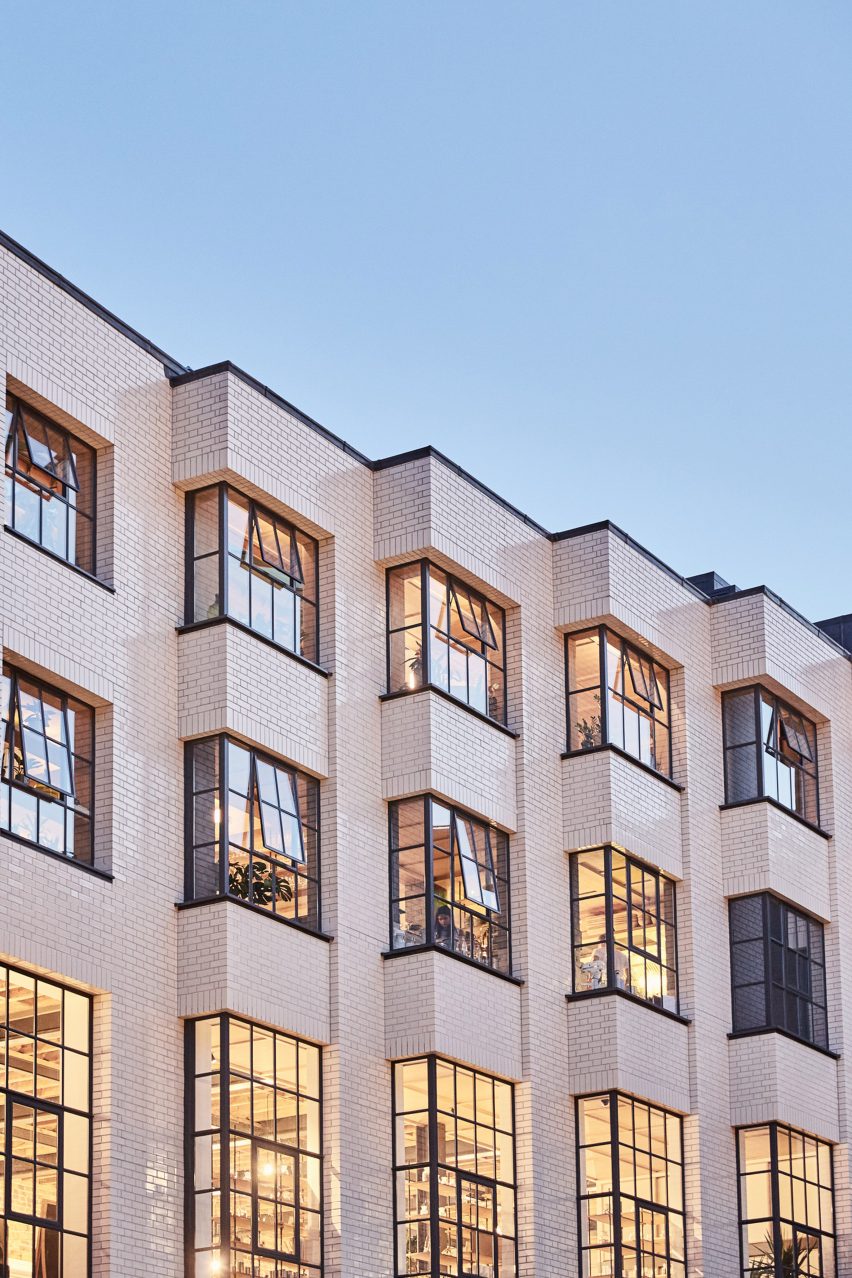
The renovation saw Farrells dramatically expand Pantechnicon by adding a three-storey rear extension and enlarging its basement.
Clad in glazed white bricks, the extension is stepped in form and is punctuated by large crittal-style windows that wink at the building's past as a warehouse.
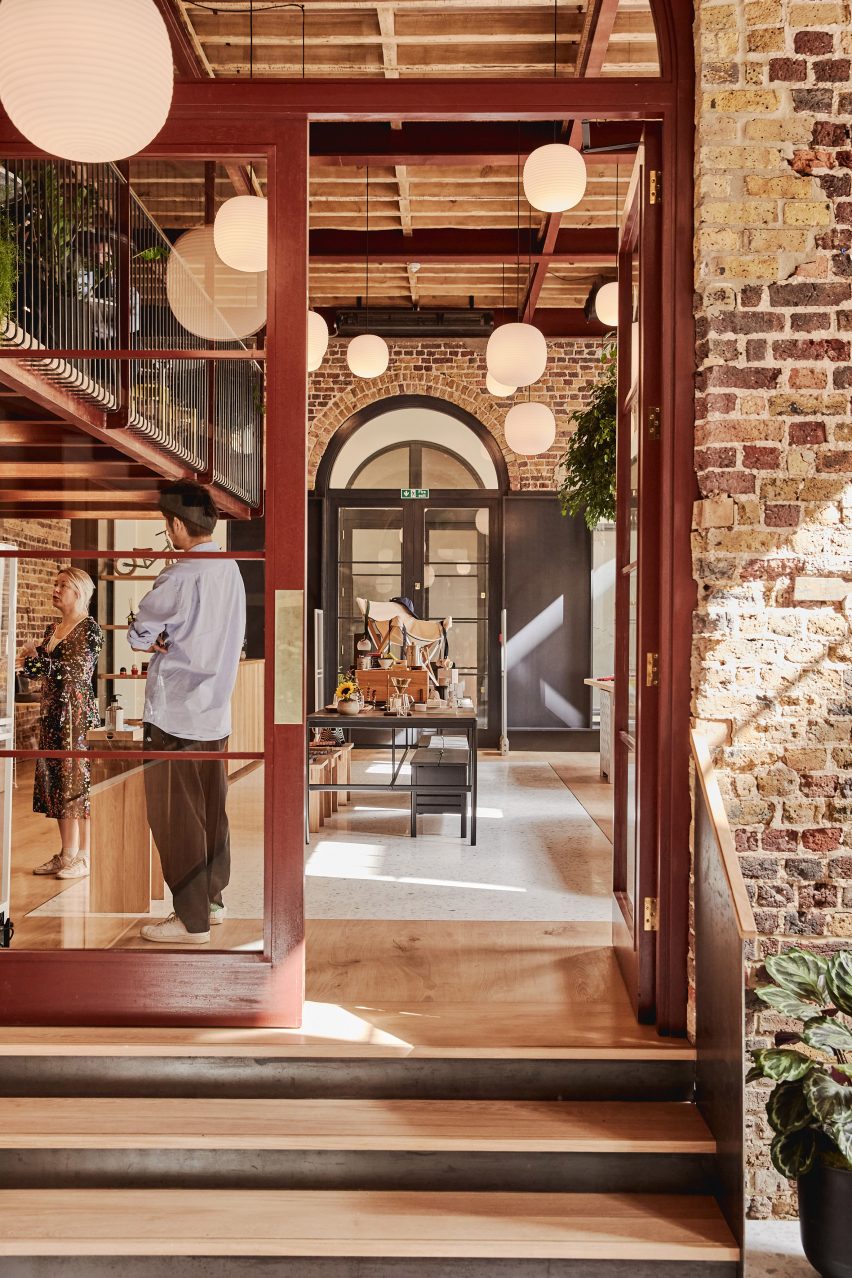
Care was taken to preserve Pantechnicon's grandiose facade, which features a series of towering columns. The building also kept its original name – "pan" stems from the Greek term for "all", and "techne" loosely translates to "arts and crafts" or the act of making.
"Our designs have carefully restored the building and celebrated its heritage, whilst enhancing its interiors for modern-day use," said Russ Hamilton, design partner at Farrells.
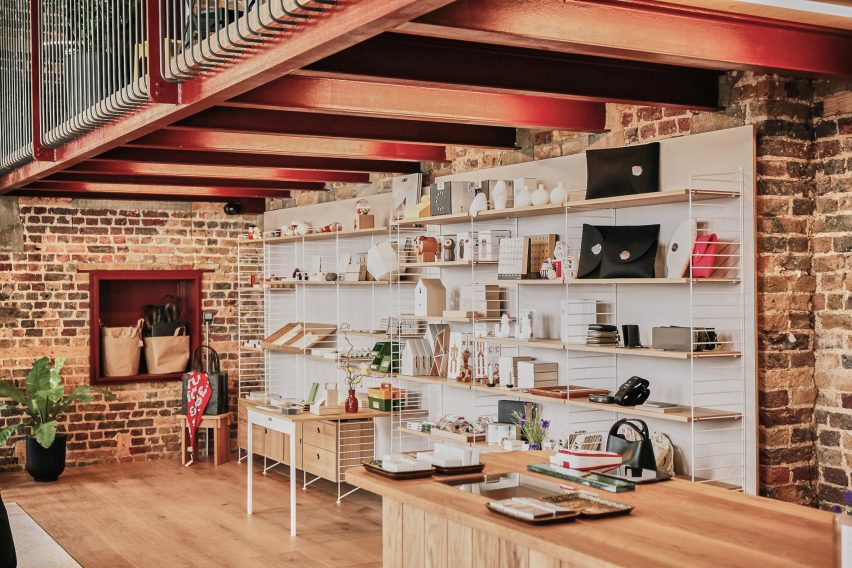
The ground floor of Pantechnicon showcases what's referred to as The Edit, a curated selection of products from Japanese or Nordic brands. This includes design objects from Tokyo-based studio Nendo, jewellery by Norweigan designer Tom Wood and footwear from Danish label Erik Schedin.
Pieces are presented on wooden counters that have small leafy trees rising up through their centre, while lantern-like lights hang directly overhead.
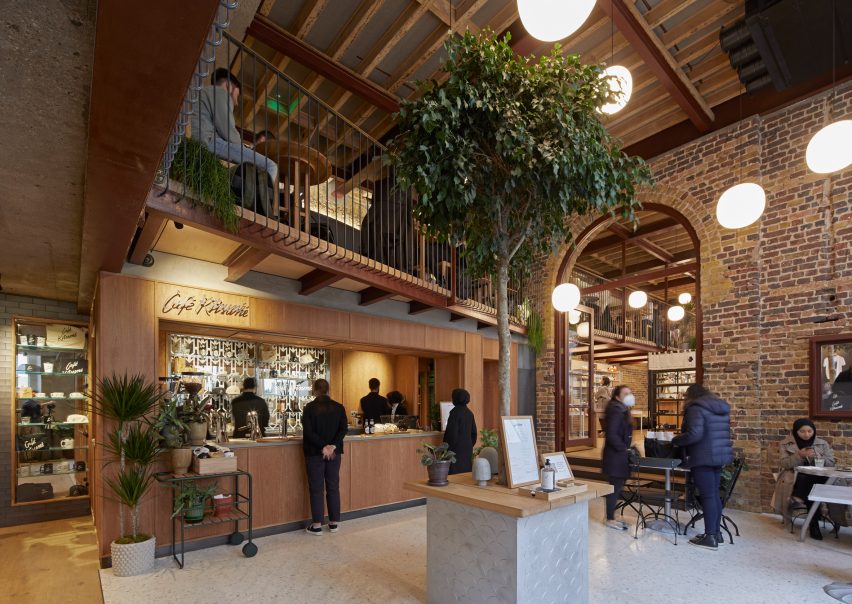
Should visitors get peckish, they can grab a coffee and snacks at Pantechnicon's in-house branch of Cafe Kitsuné, which was design by London studio DEIK. It comes as part of a chain of cafes presided over by Kitsuné, a French-Japanese music and fashion label.
As evening falls there's additionally the option of Sakaya, also by DEIK, which offers an extensive menu of whiskies, sake and umeshu – a sweet Japanese liqueur made by soaking ume plums in liquor and sugar.
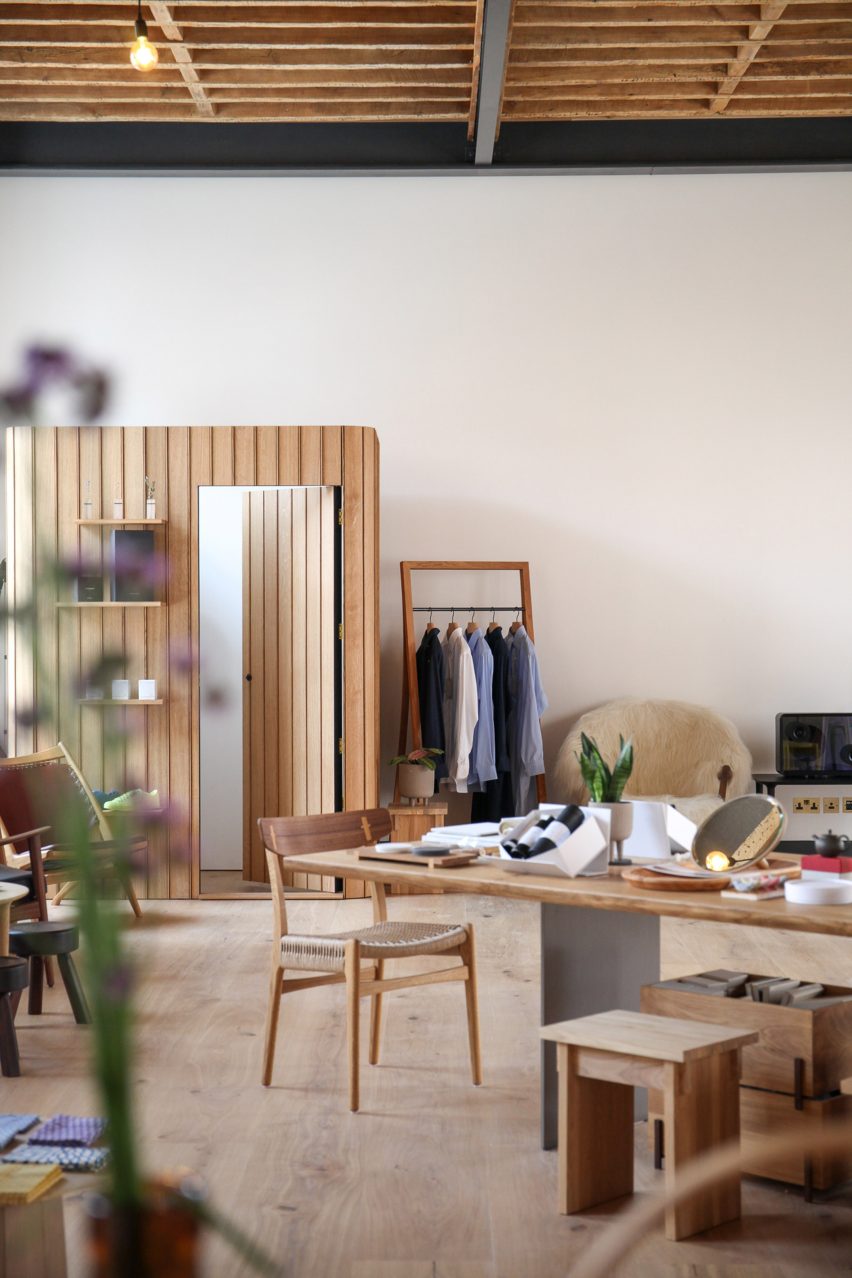
More products will be displayed on Pantechnicon's first floor in another retail area called The Studio. This level of the store, however, is overall meant to be more immersive, where visitors can get to know more of Japanese and Nordic culture through workshops and pop-up dining experiences.
At the time of opening, there was a 20-cover eatery called Sachi, which served up dishes made from typical Japanese market ingredients. A permanent iteration of Sachi will open in Pantechnicon's basement in 2021.
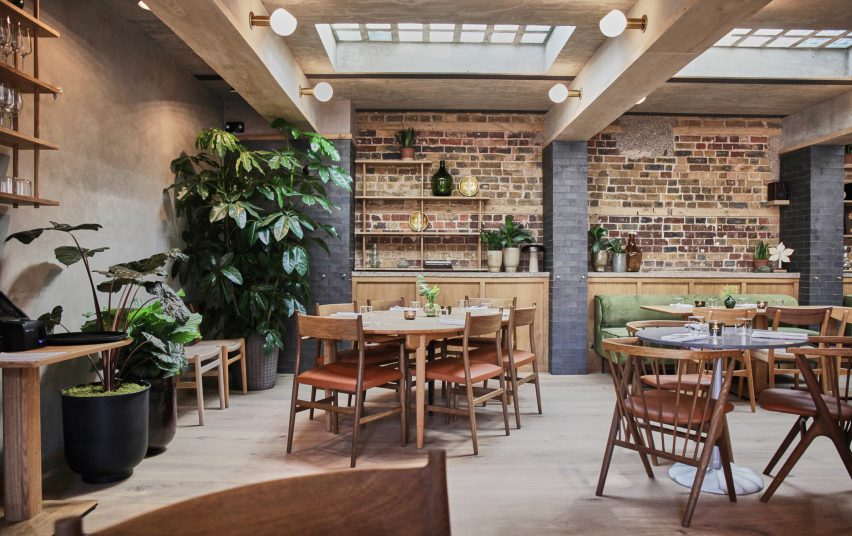
On the store's second floor is another restaurant called Eldr, or "fire" in Old Norse. Its diverse menu borrows from the cuisines of the 10 different countries that make up the Nordic region.
A further dining venue headed up by Finnish chef Joni Ketonen occupies a light-filled, greenhouse-style structure on Pantechnicon's rooftop, which Farrells added during the renovation.
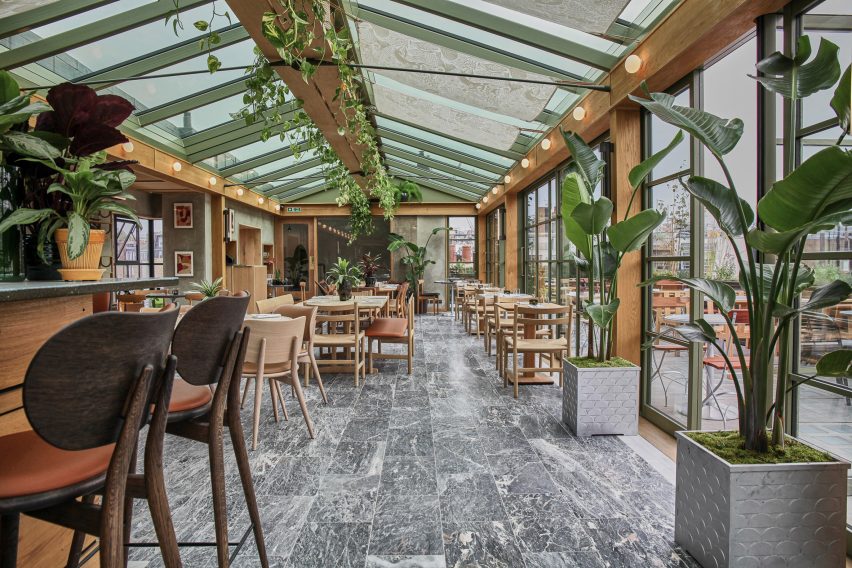
Farrells has been established for over 50 years and works between offices in London, Hong Kong and Shanghai. Other recent projects by the firm include the creation of six interconnected skyscrapers in Shenzhen.